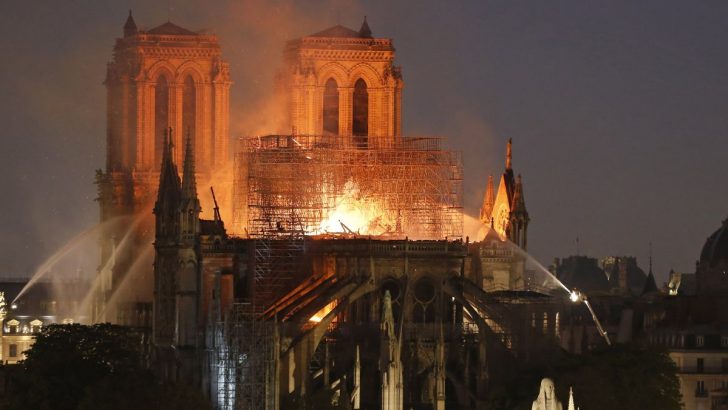“Unlike the Eiffel Tower, that other great emblem of Paris,” writes Tom Holland at spectator.co.uk, “Notre Dame provides the French with evidence that their modern and secular republic has its foundations deeply rooted in the Middle Ages.”
There’s been much to criticise in The Spectator over recent years, but ‘Thank God for western values’ is a brilliant summary of how much our modern world owes to and is sustained by Christianity.
“The wellspring of humanist values lies not in reason, not in evidence-based thinking,” Holland writes, “but in the past, and specifically in the story of how a cult inspired by the execution of an obscure criminal in a long-vanished empire emerged to become – as the great Jewish scholar Daniel Boyarin has put it – ‘the most powerful of hegemonic cultural systems in the history of the world’.”
Pointing out that the greatest critics of Christianity have had deeply Christian assumptions, Holland says: “The risen Christ cannot be eluded simply by refusing to believe in him. That the persecuted and disadvantaged have claims upon the privileged – widely taken for granted though it may be today across the West – is not remotely a self-evident truth.
“Condemnation of Christianity as patriarchal or repressive or hegemonic derive from a framework of values that is itself nothing if not Christian,” he observes, adding that familiarity with the Easter story has desensitised us to the audacity of Christianity’s claims.
Artisans
Church art can remind us of this, Isabelle Hamley writes at psephizo.com in ‘Why does Notre Dame matter?’ Wondering what the architects and artists and artisans of Notre Dame would think of their work speaking deeply to many who would not describe themselves as Christian, she writes: “Isn’t this part of what cathedrals are for? Isn’t communicating the beauty of the Gospel, awe at its power, an essential aspect of mission? And when we recognise our common humanity, and lift our eyes about utilitarianism, then, hopefully, we recognise that there are many, many other situations we need to attend to.”
Stressing how buildings can become monuments of our memory and identity, she says it was moving to see journalists struggle to express what Notre Dame meant to them, adding that the flames of Holy Week have enabled a people to be reminded of their past and hope for new life.
“France has tried very hard to push God away, and forget the Faith of centuries,” she continues. “But when the people fell silent, the very stones cried out. The question is, now that we remember, what will we do with these memories for the future? There is a small window of opportunity for the nature of public discourse to change.”
France, as Dr Hamley says, has a deeply religious past and a deeply ambiguous relationship with that past, and it is well worth reading Bishop Kevin Doran’s 2012 blogpost ‘Laïcité – Secularism French Style’ at sabbaticalinaurignac.wordpress.com to get a handle on the history of this relationship and to lessons to be drawn from this.
It’s worth reading, too, Alissa Wilkinson’s observations in ‘Why we wept when Notre Dame burned’ at vox.com, on “why some Parisians reportedly wept and gathered to sing near the cathedral, even if they hadn’t set foot in it for years”.
Certainly, we should be wary of thinking of the fires as metaphors for the ravages of secularisation, Timothy P. O’Malley writes in an extraordinary article, ‘The Notre-Dame Cathedral fire isn’t a sign’, at churchlife.nd.edu.
“Notre-Dame may have been on fire but the public sphere, so marked by a program of supposed laïcité, remembers,” he writes. “Paris remembers the voice of countless pilgrims who have sung such hymns of praise on her streets before. And they will sing again. Paris remembers. How could she not? And in this moment, Paris once more reminded us of the reason for her hope. The reason for this hope is a woman, a woman who is Our Lady, who carries within her womb the sole hope of the human race–the Word made flesh.”


 Greg Daly
Greg Daly
